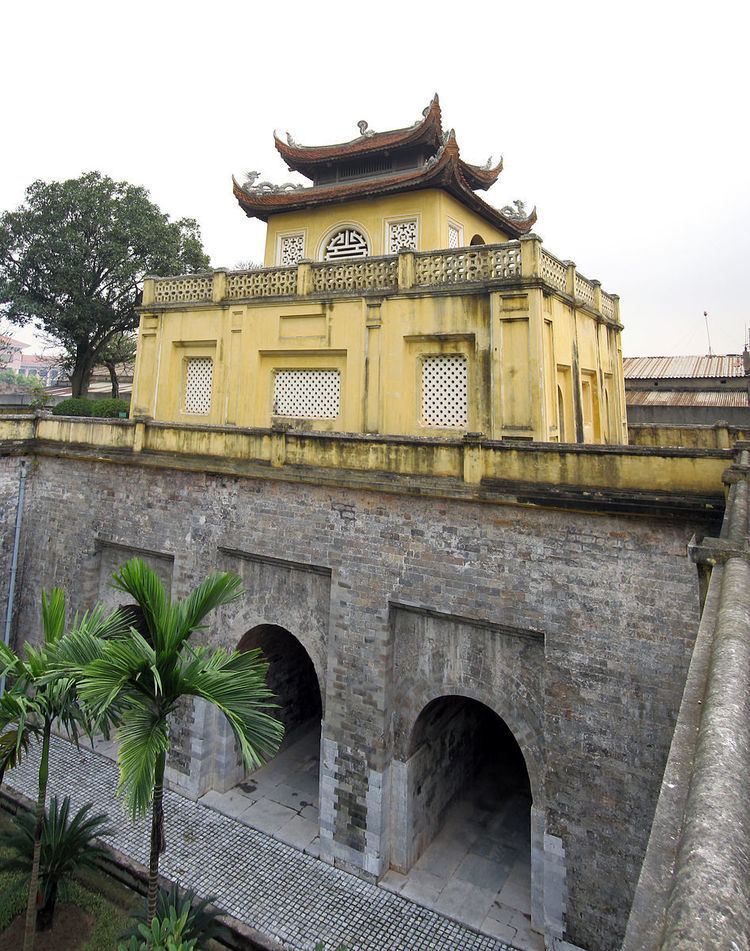Location Vietnam Criteria ii, iii, iv UNESCO region Asia-Pacific UNESCO World Heritage Site inscription 2010 | Type Cultural Reference 1328 Phone +84 90 448 11 57 | |
 | ||
Address Quán Thánh, Ba Đình, Hanoi, Vietnam Hours Open today · 8AM–12:30PM, 1:30–7:30PMSaturday8AM–12:30PM, 1:30–7:30PMSunday8AM–12:30PM, 1:30–7:30PMMondayClosedTuesday8AM–12:30PM, 1:30–7:30PMWednesday8AM–12:30PM, 1:30–7:30PMThursday8AM–12:30PM, 1:30–7:30PMFriday8AM–12:30PM, 1:30–7:30PM Similar Temple of Literature - Hanoi, Hoàn Kiếm Lake, One Pillar Pagoda, Temple of the Jade Mountain, Ho Chi Minh Mausoleum | ||
Imperial citadel of th ng long
The Imperial Citadel of Thang Long (Vietnamese: Hoàng thành Thăng Long) is the cultural complex comprising the royal enclosure first built during the Lý Dynasty and subsequently expanded by the Trần, Lê and finally the Nguyễn Dynasty. The ruins roughly coincide with the Hanoi Citadel today.
Contents
The royal palaces and most of the structures in Thang Long were in varying states of disrepair by the late 19th century with the upheaval of the French conquest of Hanoi. By the 20th century many of the remaining structures were torn down. Only in the 21st century are the ruin foundations of Thang Long Imperial City systematically excavated.
The central sector of the imperial citadel was listed in UNESCO's World Heritage Site on July 31, 2010 at its session in Brazil.
Relics
Remains of the Imperial City were discovered on the site of the former Ba Đình Hall when the structure was torn down in 2008 to make way for a new parliament building. Various archaeological remains unearthed were brought to the National Museum to be exhibited. Thus far only a small fraction of Thăng Long has been excavated.
Hanoi Flag Tower
Among the structures related to the Imperial City is the Flag Tower of Hanoi (Cột cờ Hà Nội). Rising to a height of 33.4 m (41 m with the flag), it is frequqently used as a symbol of the city. Built in 1812 during the Nguyen Dynasty, the tower, unlike many other structures in Hanoi, was spared during the French colonial rule (1885–1954) as it was used as a military post.
D67 Tunnel and House
house and tunnel D67 is situated in the north direction of Kinh Thien hall. Previously, this was headquarters of the Vietnam People’s Army during the war from 1954 to 1975. To visit this historic site, tourists need to buy an entrance ticket of VND 30,000. Students and elderly people pay VND 15,000. D67 house was built in 1967, with modern architectural style, 60-centimeter wall and good soundproofing system. At this place, exhibits are tools that comrades in the Politburo and the Central Military Commission, the Ministry of Defense and the General Staff used in the resistance war against the US.
